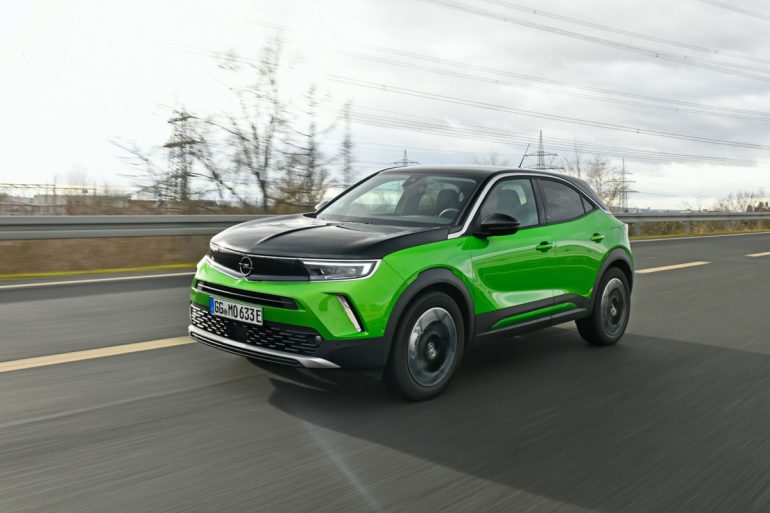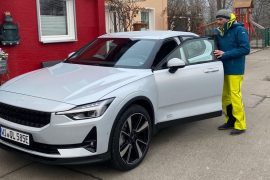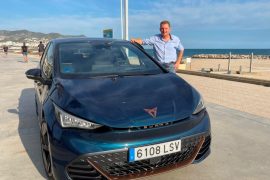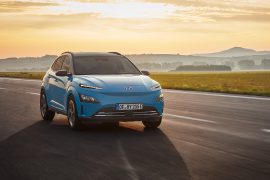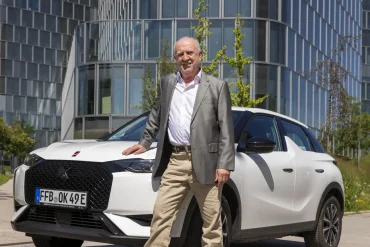We were able to gain a first impression of the electric compact SUV from Rüsselsheim last September. Now we had the opportunity to drive the Mokka-e. Our forecast: the newcomer will be a bestseller
The – justifiably – proud Opel designers are not afraid to use the richly worn image of the blank sheet of paper on which the first designs were sketched to illustrate how newly the second generation of the successful Mokka model has been developed from the ground up.
A real eye-catcher
With its eye-catching and pleasing metallic paint in “Matcha Green”, its balanced proportions, the short overhangs and the striking new “Vizor” brand face, the new car cuts a really good figure on the presentation stage. The fact that it is also a real eye-catcher in the wild is proven by the many glances our test vehicle attracted from passers-by. We were told in detail what all contributes to the extremely successful appearance of the compact five-seater. Let’s leave it at this point with blanket praise for Opel’s design department and say that they have done a really good job. Even though the exterior looks quite powerful, the design language remains reduced and clear, avoiding any playfulness or even ostentation. The new, attractive Mokka could well appeal to a design-oriented clientele that has so far tended not to be part of Opel’s clientele.
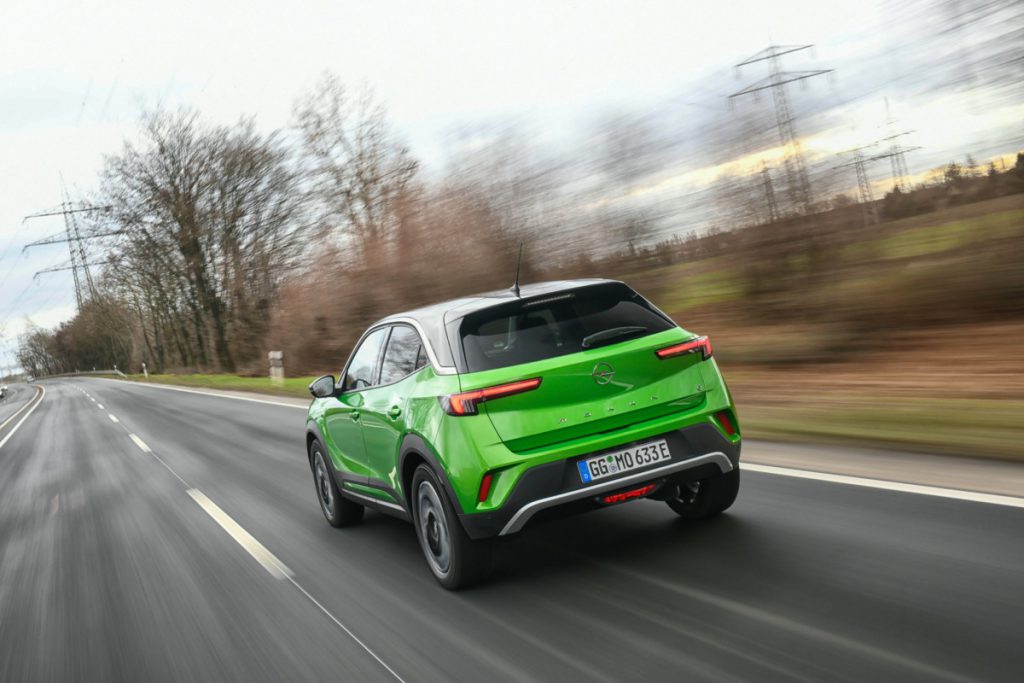
Successful slimming cure
Hard to believe at a time when models are generally always larger than their predecessors: the new Mokka has shrunk by 125 millimetres in length and 124 millimetres in height compared to the previous model. Only the width increased by ten millimetres, and the wheelbase was also extended – by a whole two millimetres. Despite the somewhat more compact dimensions, the B-segment SUV offers sufficient space for five passengers, even if passengers of above-average height might have to sit a little more cramped in the rear. The electric model’s batteries, which are housed in the floor of the vehicle, have no effect on seating comfort thanks to the CMP modular system that spans all brands and powertrains, and the load compartment has a volume of 350/1105 litres, just like the internal combustion engine versions.
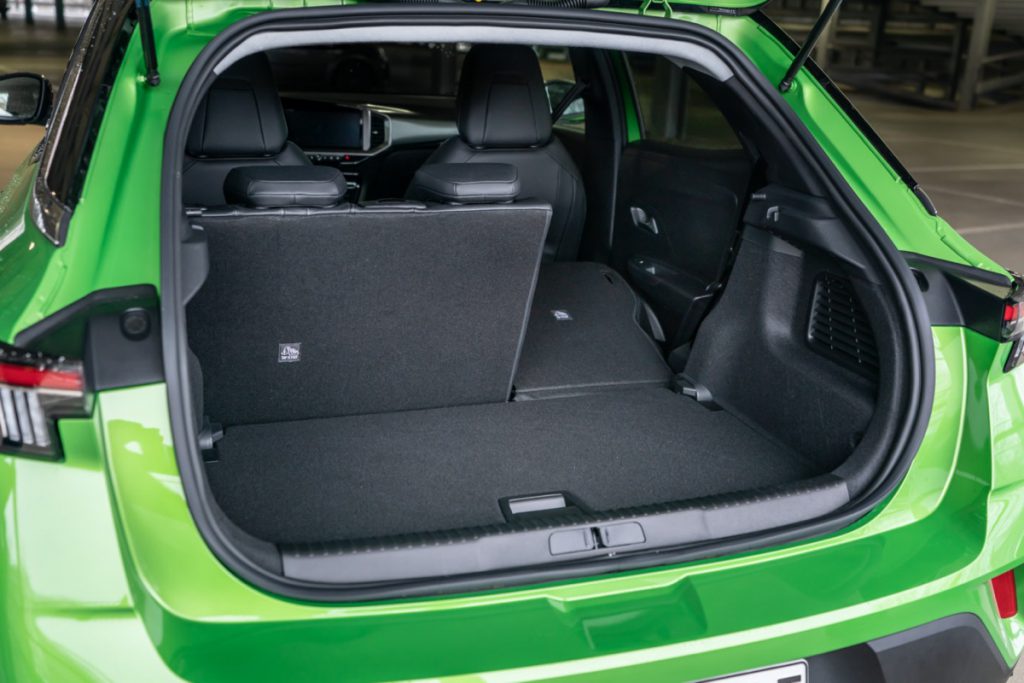
Extreme lightweight construction, combined with an increase in body rigidity, also reduced the vehicle’s weight by an impressive 120 kg, which helps to compensate for almost half of the battery-related extra weight of the Stromer variant of approx. 300 kilograms.
User-friendly instrument mix
The interior also reflects the developers’ ambition for clarity and intuitive operability of the instruments. The horizontally arranged “Pure Panel”, which is slightly curved towards the driver and consists of two touch screens of 12 and 10 inches respectively, is clearly structured and intuitively operable with its large icons. Speaking of ease of use, one cannot praise the Opelians enough for resisting the temptation of total digitalisation. The result of their digital “purification” can be seen in the absence of overloaded and overly complex menu navigation, but also in the fact that some functions, such as heating and volume control, can still be adjusted via control buttons. More ergonomic and, especially at higher speeds, much more roadworthy. By the way: a customer survey by Opel documented the explicit wish for a reasonable mix of digital and conventional instruments. It’s nice to see that the customer wishes – so successfully – have been taken into account.
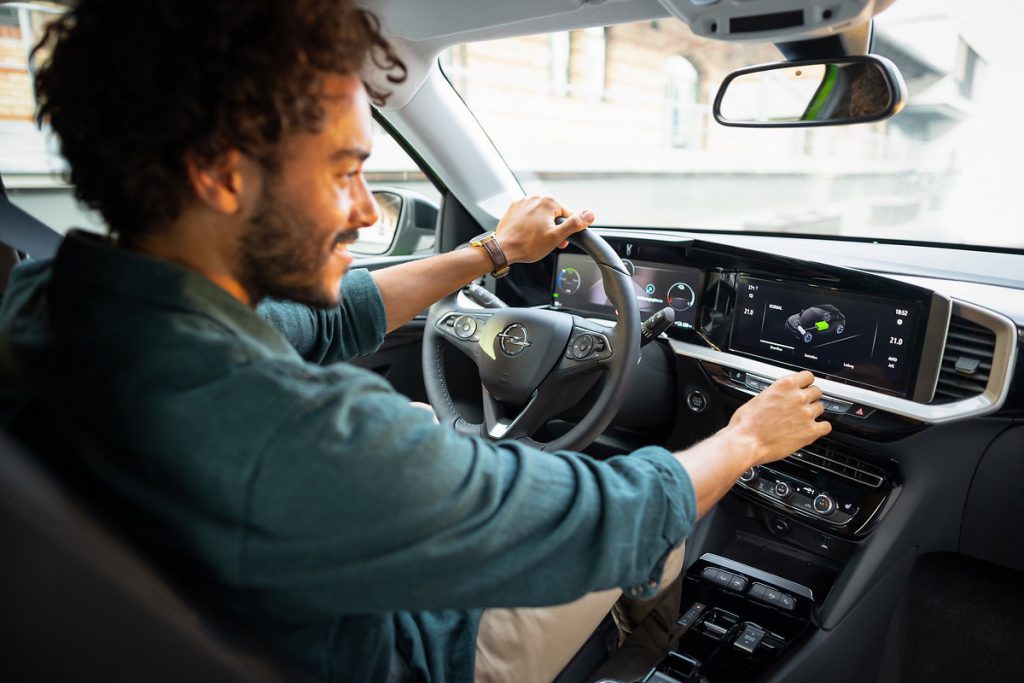
Reasonable electric package
The new electric Mokka arouses positive emotions, but also convinces with sensible and practicable solutions. This also includes the fact that, as with the Corsa-e, a sufficient but not excessively powerful engine of 100kW/136 hp was chosen. Enough to deliver the typical high acceleration values from a standstill with a maximum torque of 260 Newton metres. Especially in Sport mode, which, in addition to Normal and Eco modes, can be conveniently set via a switch in the centre console. The battery capacity of 50 kWh is also on a par with the Corsa-e and thus a more ecologically compatible middle ground than some competitors who strive for the longest possible range while worsening the environmental balance of their electric vehicles with larger battery packs. We assume that the maximum range of 324 kilometres calculated by the manufacturer on the basis of the now common WLTP cycle does not deviate too far from real-world conditions. At least in warmer temperatures, with a somewhat moderate driving style and in eco mode, 300 kilometres should be possible. On longer journeys, thanks to the Mokka-e’s ability to charge with 100 KW direct current, e-drivers can add 100 kilometres to their range in about 12 minutes. If you make a stopover of half an hour, you can charge the battery to 80 percent in this time. All in all, there is virtually nothing to criticise about the technical configuration of the second Opel Stromer of the modern era. At most, one would wish to be able to choose between more than just one, albeit adjustable, recuperation level.
High comfort
On the test route with motorway sections and inner-city passages, the new full-flow vehicle always showed superior handling. The Mokka-e has a firm grip on the road, easily absorbs bumps in the road and remains absolutely true to track even in fast bends. The electrically assisted steering is extremely smooth, but does not feel spongy. In view of the pleasant silence caused by the absence of the combustion engine sound, drivers of an electric model appreciate the peace and quiet when the level of driving noise is as low as possible. This is the case with the Mokka-e, where the reduction of the cd value to 0.32 (predecessor 0.35) is one of the contributing factors. In this way, it was possible to reduce the noise level at 130 km/h by 16% compared to the predecessor model. The 16 available assistance systems also contribute to comfort and safety. The portfolio includes a front collision warning system with automatic hazard braking and pedestrian detection, an active lane departure warning system, an automatic parking assistant, a blind spot warning system and a rear view camera.
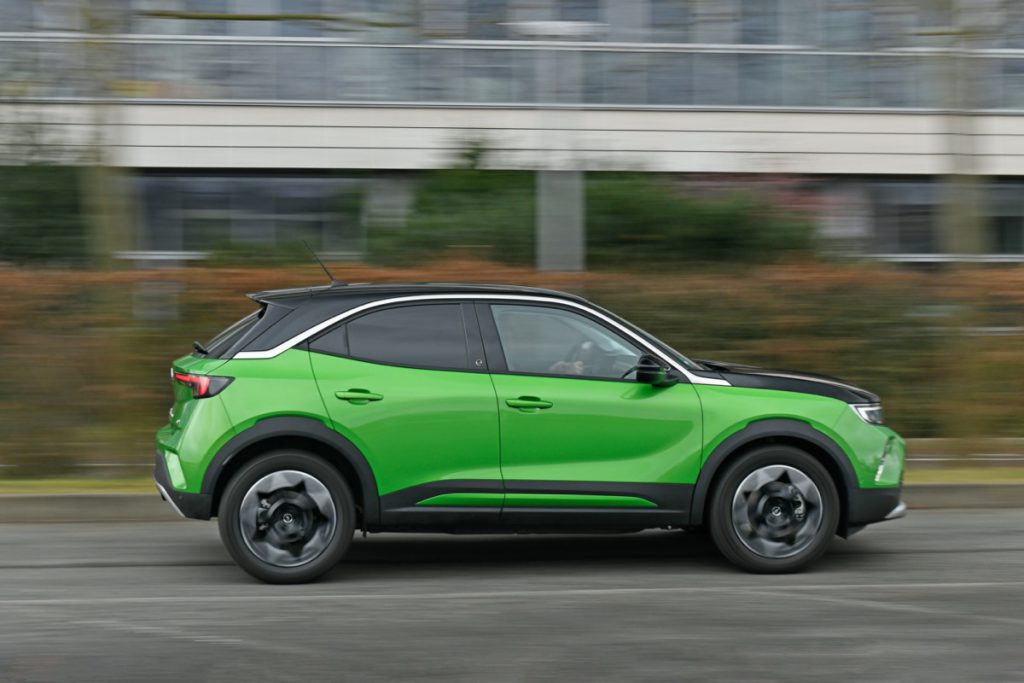
Conclusion
With the new Mokka, Opel presents a visually successful, attractive vehicle in the rapidly growing compact SUV segment. Its predecessor was already one of the Rüsselsheim company’s most successful models, with over a million sold, so the completely renewed and improved Mokka is likely to have even more brilliant times ahead of it. This is especially true of the electric model, which, with a price starting at 24,540 euros after deducting the eco-rebate, is likely to become a bestseller. At least in theory. Already, individual configurations are no longer available this year and some customers will therefore have to wait until 2022. Apparently, the demand for the crossover electric car was underestimated, although the experience with the Corsa-e could have led to an increase in sales forecasts. After all, almost every third private customer of the small car already chose the electric version. Those who are prepared to compromise on one or two special wishes will certainly be able to find a dealer who can deliver in 2021. Opel recently announced that every customer who orders now will be able to take delivery of his or her car this year.
Text: Peter Grett
Pictures: Opel

